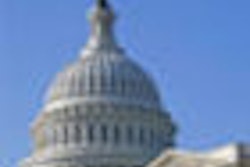
The first-ever survey of Northern Virginia's oral health reveals that lower-income families are at a distinct disadvantage when it comes to getting the oral healthcare services they need.
The report, released today by the Northern Virginia Health Foundation (NVHF), calls on the community to address the region's oral health needs by taking steps to improve oral healthcare access, especially for lower-income families.
Based on a 2010 poll of 1,300 North Virginian adults conducted by Third Eye Strategies, the survey found that while nearly all (91%) higher-income adults reported seeing a dentist in the last two years, fewer than two-thirds (63%) of lower-income adults said they saw a dentist within the past two years.
Cost was the main barrier to getting dental care, according to the survey; 73% of lower-income households (defined as those with an annual income below $40,000) did not have dental insurance. In addition, two-thirds of this population said they could not afford dental insurance, and 66% of lower-income adults said they could not afford to see a dentist.
Limited Medicaid coverage
Since its inception in 2005, the NVHF has recognized the critical need to expand access to oral healthcare in Northern Virginia. In a report issued earlier this year, the Pew Center on the States gave Virginia a C grade for its efforts to address children's dental health needs, noting that the state meets only half of the eight benchmarks needed to improve dental care.
The situation is worse for adults, the NVHF report noted. In Virginia, Medicaid only covers "medically necessary oral surgery." This excludes annual checkups, endodontics, restorative, or prosthetic services. While some area dentists volunteer at clinics or provide services for reduced rates, "the need far exceeds the number of dentists will to provide those services," the report noted. "Despite the area's overall wealth and proximity to the U.S. capitol, it is clear that many individuals in Northern Virginia have difficulty paying for and accessing needed dental care."
Since 2005, the NVHF has committed $800,000 to help these individuals get access oral healthcare services. Even so, uninsured and underinsured individuals often seek emergency dental care in hospital emergency departments or at municipal health departments, which means the underlying problems are often not addressed, according to the report.
"For people with limited means and no insurance, routine dental care is often out of reach," stated Patricia Mathews, NVHF president, in a press release. "Because of costs, they are more likely to suffer severe pain from untreated dental problems, miss time from work or school, or wind up in a hospital emergency room, which increases healthcare costs for everyone."
The Pew report estimated that Virginia needs more than 130 additional dentists to adequately meet the needs of its residents.
Few programs for adults
The NVHF report focused primarily on the oral health status of lower-income adults because there are so few programs to assist them, the foundation explained. Medicaid covers very little in the way of dental care for adults in Virginia, and only a patchwork of programs and services exists to meet the oral health needs of low-income adults, according to the foundation.
The survey assessed numerous factors affecting the oral health of Northern Virginians, gauging their perceptions of oral health and also documenting obstacles to oral healthcare.
"The results demonstrate that far higher percentages of lower-income residents suffer from dental problems, impacting both their health and their jobs, than do residents with higher incomes," the foundation noted.
Among the report's key findings:
16% of lower-income adults have not seen a dentist in more than five years, compared with only 3% of higher-income adults. Lower-income residents were also more likely than higher-income earners to put off needed dental care treatment due to cost.
Among those who do have health insurance, only 24% have coverage that includes dental care. For higher-income adults, the percentage with dental coverage is 64%.
Lower-income adults were five times more likely than higher-income adults (26% versus 6%) to say they needed to have a tooth pulled. 20% of low-income people had dentures, compared with 4% of higher-income people.
15% of lower-income adults said they lacked transportation to get to a dentist, a rate nearly four times greater than that of higher-income residents. And 10% of lower-income earners said they needed child care in order to see a dentist, compared with 5% of higher-income earners.
45% of lower-income parents whose children haven't received recent care said they couldn't afford dentist visits for their children. Lower-income parents were more likely to report that only some of their children had seen a dentist in the last two years (16% versus 7% of higher-income parents).
Among those parents surveyed whose children have not received care recently, 52% of lower-income parents said they only seek dental care for their children in an emergency, compared with 21% of higher-income parents.
"Too many Northern Virginians are not getting the oral healthcare they need," Mathews said. "We hope that an array of Northern Virginia stakeholders -- dentists, policymakers, safety net clinics, and other nonprofit organizations -- will make improving oral healthcare access a priority so that more residents, especially those with lower-incomes, can get oral healthcare when they need it."
Recommendations
The report concludes with recommendations for local and regional stakeholders to put more resources into patient oral health education, new models for integrating oral and primary healthcare, and increasing the number of providers who offer a dental home for pediatric patients.
At the state and federal levels, the NVHF believes that policymakers should include comprehensive dental services for all individuals who are eligible for Medicaid, not just emergency extractions for adults.
"Only 7% of all adults in Northern Virginia are aware of any programs that help pay for dental visits for adults," the report noted. "In addition, while the commonwealth has made progress in expanding access to dental care for children, close to half of Virginia's lower-income children still do not receive dental services."
This is particularly troubling, the NVHF said, because lower-income children have access to dental care through Smiles for Children, the dental program for children enrolled in the state's Medicaid program.
The foundation also recommends that reimbursement for dental services through Medicaid be increased to at least at the 65th percentile of the ADA rate survey.
"Reimbursing dental services for Medicaid-eligible patients at a higher rate could increase the number of providers willing to see patients," the report concluded.



















